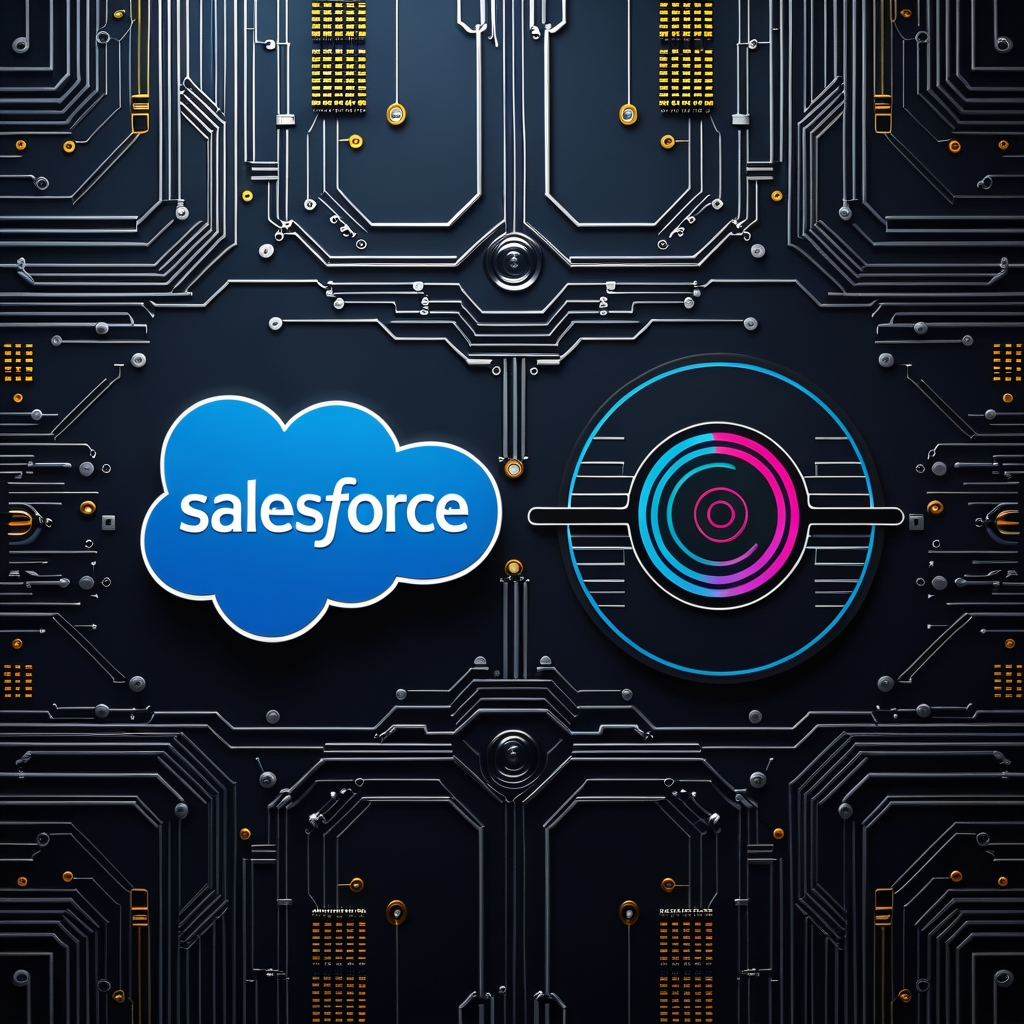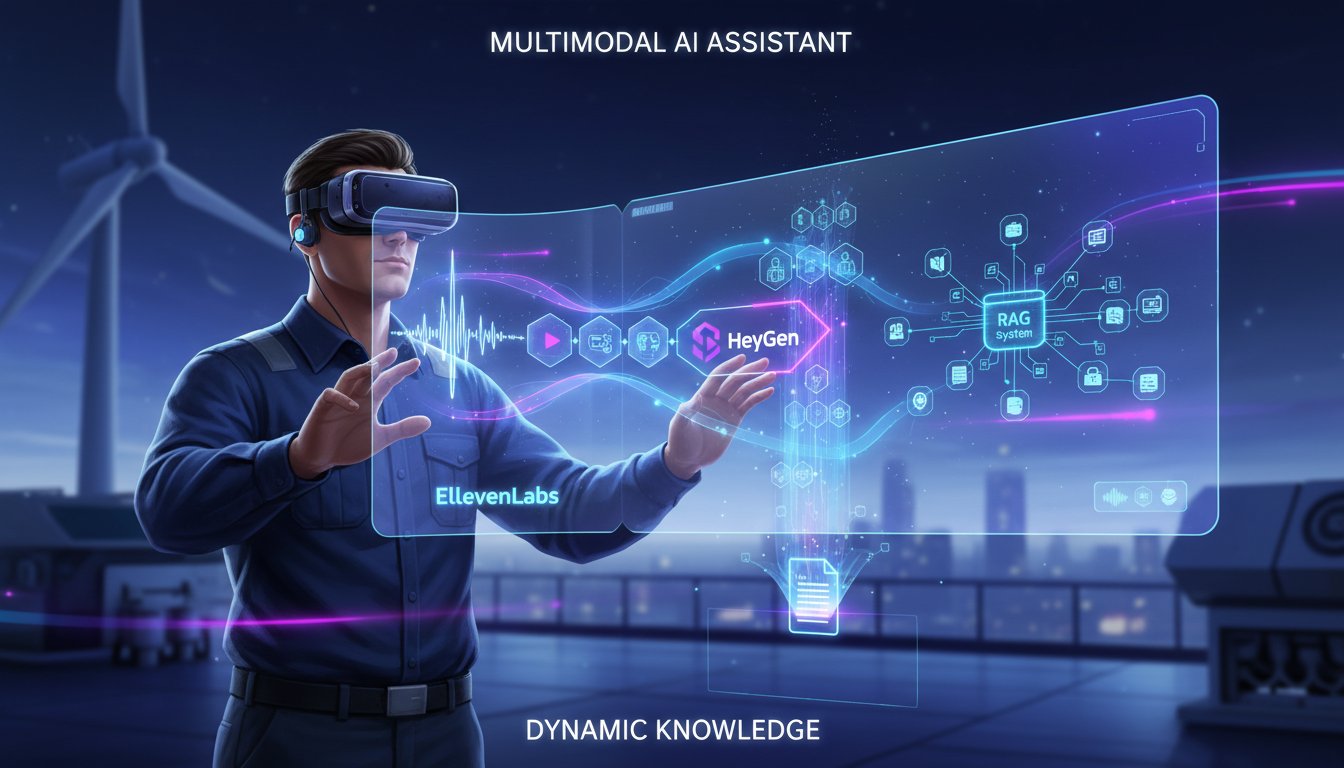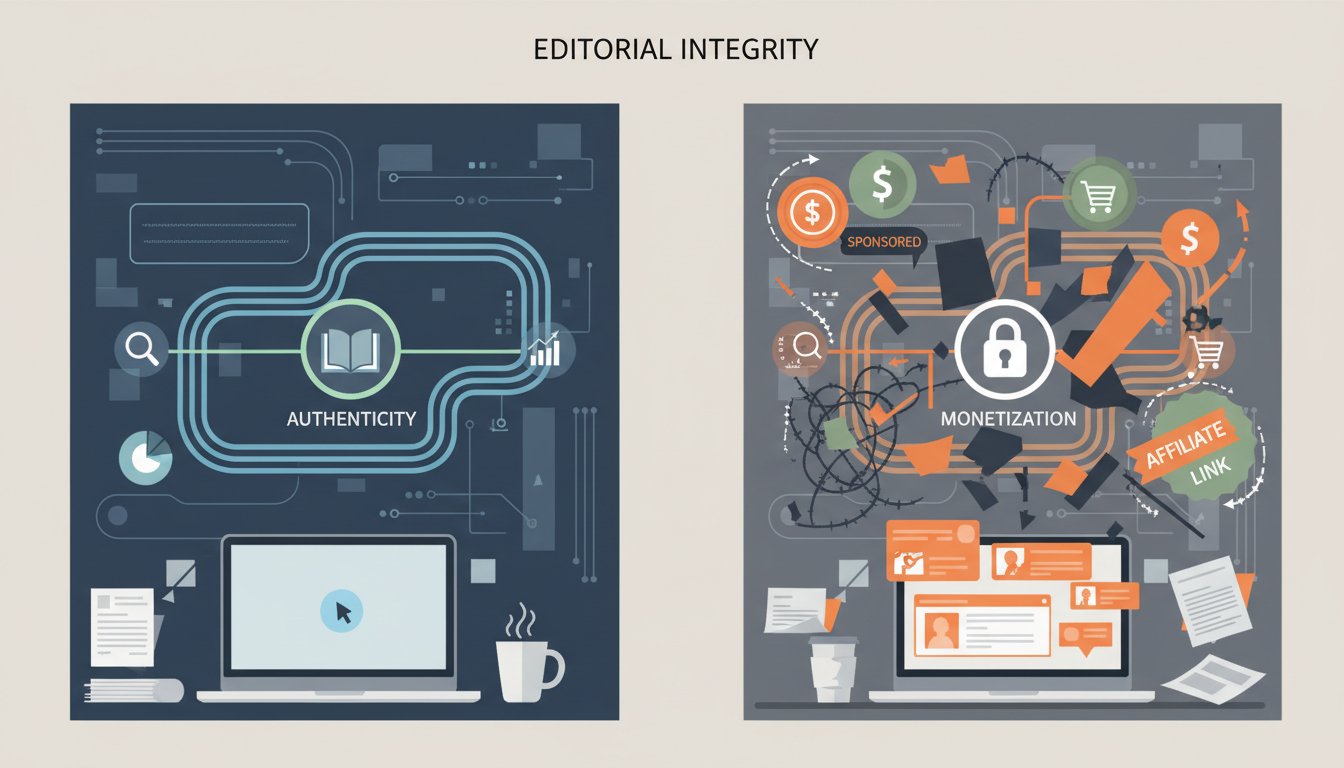3 Steps to Seamlessly Integrate ElevenLabs Audio into Your Salesforce Workflow
In today’s competitive landscape, personalized customer engagement is paramount. While text-based communication remains essential, the power of voice—conveying tone, emotion, and a human touch—offers an unparalleled opportunity to connect with your audience. This technical walkthrough will guide you through integrating ElevenLabs’ cutting-edge AI voice generation capabilities with Salesforce, the world’s leading CRM platform.
This article is designed for technical implementers, Salesforce administrators, and innovative marketing or sales operations managers looking to enhance their enterprise-grade Retrieval Augmented Generation (RAG) systems and overall customer interaction strategies. We’ll meticulously detail the 3-step process for setting up this powerful integration, including API configurations and authentication, enabling you to automate the creation and delivery of personalized voice messages directly from Salesforce.
Why Integrate ElevenLabs with Salesforce?
Integrating ElevenLabs into your Salesforce environment unlocks a new dimension of customer communication and operational efficiency:
- Elevate Customer Communication: Move beyond standard emails and texts. Deliver personalized voice messages for follow-ups, updates, and notifications that capture attention and resonate more deeply.
- Personalization at Scale: Leverage Salesforce data to dynamically generate unique voice messages for thousands of customers, maintaining a personal touch without manual effort.
- Enhance RAG Systems: Generated audio content, such as summaries of customer interactions, can be fed into your RAG systems. Transcripts or metadata associated with these audio files enrich the knowledge base, allowing for more comprehensive and nuanced information retrieval by your AI models.
- Streamline Workflows: Automate tasks like post-call summaries, service appointment reminders, or lead nurturing follow-ups, freeing up your team for more strategic activities.
- Boost Engagement & Accessibility: Voice messages can have higher engagement rates than text alone and offer an accessible alternative for customers who prefer or require audio content.
Prerequisites:
Before you begin, ensure you have the following:
- An active ElevenLabs account. You can try ElevenLabs for free now.
- A Salesforce edition with API access (e.g., Enterprise, Unlimited, or Developer Edition).
- Administrator privileges in your Salesforce org.
- A basic understanding of APIs and Salesforce configuration (familiarity with Apex, Salesforce Flow, or middleware concepts will be beneficial).
The 3-Step Integration Process
Let’s dive into the core steps to connect ElevenLabs with Salesforce.
Step 1: Setting Up ElevenLabs API Access & Authentication
Properly configuring access to the ElevenLabs API is the foundation of this integration.
-
Obtain Your ElevenLabs API Key:
- Log in to your ElevenLabs account.
- Navigate to your profile or settings section where the API key is located.
- Copy your API key. Treat this key like a password and store it securely. You’ll need it to authenticate your Salesforce requests.
-
Understand ElevenLabs API Endpoints:
- Familiarize yourself with the ElevenLabs API documentation. Key endpoints will include text-to-speech (TTS) generation, voice library access, and potentially others depending on your use case.
- The primary endpoint for generating speech is typically
https://api.elevenlabs.io/v1/text-to-speech/{voice_id}.
-
Configure Salesforce Authentication with Named Credentials:
- Named Credentials in Salesforce are the recommended way to store and manage authentication details for external services securely.
- Go to Salesforce Setup, search for “Named Credentials.”
- Click “New Named Credential.”
- Label:
ElevenLabs API(or a name of your choice) - Name:
ElevenLabs_API(auto-populated) - URL:
https://api.elevenlabs.io(the base URL for the API) - Identity Type:
Named Principal - Authentication Protocol:
Password Authentication - Username: You can put a placeholder value here (e.g., “elevenlabs_user”) as the API key is usually sent in a header.
- Password: Enter your ElevenLabs API Key.
- Generate Authorization Header: Uncheck this box. You will typically add the API key as a custom header (
xi-api-key) in your Apex callout. - Allow Merge Fields in HTTP Header: Check this if you plan to use merge fields (though for the API key header, it’s usually static).
- Allow Merge Fields in HTTP Body: Check this.
- Label:
- Save the Named Credential.
Step 2: Building the Integration Logic in Salesforce
With authentication configured, the next step is to create the mechanism within Salesforce to communicate with the ElevenLabs API. Apex callouts are the most robust way to achieve this.
-
Core Concept: Apex Callouts
- Apex allows Salesforce to make outbound HTTP requests to external services like ElevenLabs. You’ll write an Apex class to handle this communication.
- It’s crucial to perform callouts asynchronously using
@future(callout=true)methods, Queueable Apex, or Batch Apex to prevent hitting governor limits and ensure the user experience isn’t impacted by callout latency.
-
Key Components of an Apex Solution:
- Apex Class: Create a class (e.g.,
ElevenLabsIntegrationService). - Method for Text-to-Speech:
- This method should accept parameters like the text to convert, a Salesforce record ID (for associating the audio), and optionally a voice ID from ElevenLabs.
- Constructing the HTTP Request:
HttpRequest req = new HttpRequest();req.setEndpoint('callout:ElevenLabs_API/v1/text-to-speech/{voice_id}');(Replace{voice_id}with a specific ID or make it dynamic).req.setMethod('POST');req.setHeader('xi-api-key', '{!$Credential.Password}');(If you unchecked ‘Generate Authorization Header’ and are setting it manually. Alternatively, use the Named Credential’s direct reference for the password if Salesforce handles the header.) Some preferreq.setHeader('xi-api-key', System.Label.Your_Stored_API_Key_Label);or fetching from a protected custom setting if not using Named Credential password field directly for this header.req.setHeader('Content-Type', 'application/json');req.setHeader('Accept', 'audio/mpeg');- Body: Construct a JSON payload as per ElevenLabs API documentation. Example:
json
{
"text": "Hello! This is a test message from Salesforce.",
"model_id": "eleven_multilingual_v2", // Or your preferred model
"voice_settings": {
"stability": 0.5,
"similarity_boost": 0.75
}
}
req.setBody(jsonBodyString);
- Sending the Request & Receiving Response:
Http http = new Http();HttpResponse res = http.send(req);
- Processing the Response:
- If
res.getStatusCode() == 200, the request was successful. The audio data will be inres.getBodyAsBlob();. - You can then save this
Blobas a Salesforce File (ContentVersion) and link it to the relevant record (e.g., Lead, Contact, Case, or a custom object for voice logs) usingContentDocumentLink. - Example of saving as a file:
apex
// Inside your asynchronous Apex method after a successful callout
// Blob audioBlob = res.getBodyAsBlob();
// String recordId = 'the_salesforce_record_id'; // Passed to the method
//
// ContentVersion cv = new ContentVersion();
// cv.Title = 'ElevenLabs Audio - ' + System.now().format();
// cv.PathOnClient = 'audio.mp3';
// cv.VersionData = audioBlob;
// cv.FirstPublishLocationId = recordId; // Link to the record
// insert cv;
- If
- Error Handling: Implement robust error checking (
res.getStatusCode()!= 200). Log errors, and potentially notify an administrator.
- Apex Class: Create a class (e.g.,
-
Exposing Apex to Flow (Invocable Action):
- To empower admins and for declarative automation, make your Apex method invocable by adding the
@InvocableMethodannotation. - This allows Salesforce Flows to call your Apex code, passing parameters like the script text and the target record ID.
- To empower admins and for declarative automation, make your Apex method invocable by adding the
-
Considerations for RAG Systems:
- When an audio summary or voice note is generated and stored (e.g., as a Salesforce File), ensure relevant metadata (like a transcript, keywords, or the original text prompt) is also stored and linked. This makes the audio content more discoverable and useful for your enterprise RAG system, enriching the context it can draw upon.
Step 3: Automating Voice Message Creation and Delivery
Once the backend logic is in place, you can automate the generation and delivery of voice messages using Salesforce’s automation tools.
-
Triggering Audio Generation with Salesforce Flow:
- Create a record-triggered Flow (e.g., when a Lead’s status changes to ‘Qualified’ or a Case is created).
- Use Flow elements to gather the necessary data for the voice script.
- Call the Invocable Apex action created in Step 2, passing the composed script and the relevant record ID.
-
Crafting Dynamic Scripts:
- Within your Flow (or the Apex code preparing the script), use Salesforce merge fields and formulas to personalize the text sent to ElevenLabs.
- Example:
"Hello {!$Record.FirstName}, this is a courtesy follow-up regarding your inquiry about {!$Record.Product_Interest__c}."
-
Delivering or Utilizing the Audio:
- Internal Notifications: If the audio file (ContentVersion) is linked to a record, users can access and play it directly from the record’s related lists.
- Email Delivery: Use Flow to send an email and attach the generated audio file. You’d first query the
ContentDocumentIdrelated to theContentVersionand then use that in the email attachment logic. - External Portals/Communities: If you have customer-facing portals, you could potentially embed or link these audio files for customers to access.
- CTI Integration (Advanced): For sophisticated setups, generated audio might be used in conjunction with Computer Telephony Integration (CTI) systems, though this typically requires more complex development.
Practical Applications & Use Cases
Integrating ElevenLabs AI voices into Salesforce opens up numerous possibilities:
- AI-Powered Voice Follow-ups for Sales Leads: Automatically generate and send personalized welcome messages or follow-ups to new leads, increasing engagement from the outset.
- Audio Summaries of Customer Interactions: For complex cases or long customer conversations logged in Salesforce, an AI-generated audio summary can be attached to the record. This is invaluable for RAG systems, allowing team members to quickly grasp key details without reading lengthy texts.
- Voice Notifications for Service Updates: Inform customers about service ticket resolutions, appointment reminders, or important account updates with a friendly, professional voice message.
- Personalized Marketing Campaigns: Add a unique voice element to marketing outreach, making your campaigns stand out.
- Internal Alerts & Training: Create audio versions of critical internal alerts or snippets of training materials for employees.
Best Practices for Success
To maximize the effectiveness of your ElevenLabs-Salesforce integration:
- Scriptwriting for AI Voices:
- Keep scripts concise, clear, and natural-sounding.
- Use punctuation like commas and periods to guide pacing. Explore SSML (Speech Synthesis Markup Language) if ElevenLabs and your implementation support it for finer control over emphasis and pauses.
- Test different voices from ElevenLabs’ extensive library to find ones that align with your brand and message intent.
- Managing API Usage:
- Be mindful of ElevenLabs API limits and costs. Implement logic to control the frequency and volume of API calls.
- Use asynchronous processing in Salesforce to avoid hitting governor limits and to handle potential API latency gracefully.
- Testing and Iteration:
- Thoroughly test your integration in a Salesforce Sandbox environment.
- Start with a pilot group of users or a specific use case.
- Gather feedback and iterate on your scripts, voice choices, and automation logic.
- Compliance and Consent:
- Always be aware of and adhere to regulations regarding automated messaging and calls (e.g., TCPA in the U.S., GDPR in Europe).
- Ensure you have the necessary consent from individuals before sending them automated voice messages.
- Error Monitoring and Logging: Implement comprehensive logging within your Apex classes to track API requests, responses, and any errors. This is crucial for troubleshooting and maintaining the health of your integration.
Conclusion: Amplify Your Salesforce Potential with AI Voice
Integrating ElevenLabs’ advanced AI voice generation with Salesforce offers a transformative way to enhance customer engagement, streamline operational processes, and enrich your enterprise RAG systems. By following these three steps, you can unlock the power of personalized, automated voice communication, creating more meaningful interactions and driving greater efficiency within your organization.
The future of customer relationship management is not just about data; it’s about connection. Adding the dimension of realistic, AI-generated voice allows you to connect on a more human level, at scale.
Ready to enhance your Salesforce workflow with AI-powered voice? Try ElevenLabs for free now and start building innovative solutions today!




